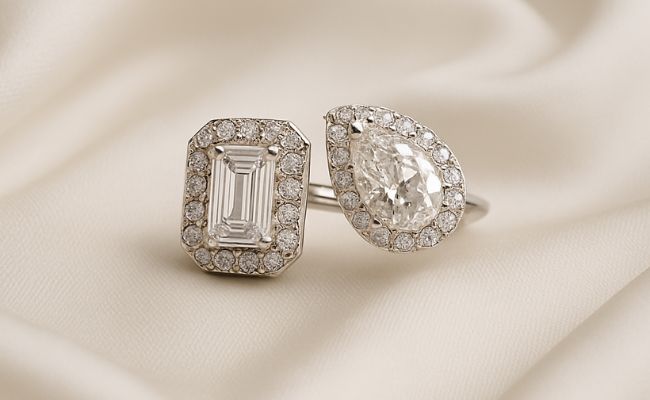Learn to know your qualities through the 4Cs
The lab-created diamond is evaluated according to four criteria, the 4 Cs, exactly like the natural diamond. It is the universal language to establish its value:
· cut = its cut (the quality of the cut according to the shape of the diamond).
· color = color
· clarity = its purity
· carat = its weight in carats
It is important to understand how diamonds are qualified because their price depends on it, which is why we invite you to discover these characteristics with us so that you can have all the information when purchasing your jewelry with laboratory-created diamonds. And since your trust is important to us, in all our product sheets you will find details of the quality of the diamond that we offer for each piece of jewelry.
Size


The cut of a diamond depends on three parameters: proportion, polishing and symmetry that define the quality of the cut. The cutting of the diamond (the cut) must follow very specific rules defined by the shape you want to obtain. Although the cut does not affect the quality of the diamond, it does release the beauty of the diamond, which affects its appearance and also its price since how the light is reflected in the diamond depends on it.
The market offers an endless number of shapes, from the most popular, the round one called brilliant, to more original ones such as heart, pear or oval. And at Mimoke we only select diamonds with an excellent or higher cut ( ideal ) for you.
Color
Typically, a diamond tends to have a slightly yellow color due to the presence of hydrogen atoms in its structure. The complete absence of color in the diamond is very rare and therefore colorless diamonds are of more value.
The color of a diamond is measured on a scale that goes from the letter D (colorless) to Z (yellow or brown).
*(GIA Scale - Gemological Institute of America)
Purity
The purity of a diamond is defined based on the presence or absence of visible inclusions or imperfections. Classification should always be done with a 10x magnifying glass. Imperfections in a diamond significantly influence its value, but in the case of VS quality Mimoke diamonds, they will not alter its beauty or its ability to reflect light.
Sizes and Weights
One carat is equivalent to 200 milligrams, or 1/5 of a gram. Gemologists divide a carat into 100 points, for example, if a diamond has 50 points, it means it has 0.50 carats.
As the diamond has more carats, its value increases exponentially. Due to the increased complexity of growing large diamonds, the price difference between carats is increasing. However, the laboratory-created diamond offers a much more affordable price in high carats since in nature the rarity of large diamonds raises its price much more.



